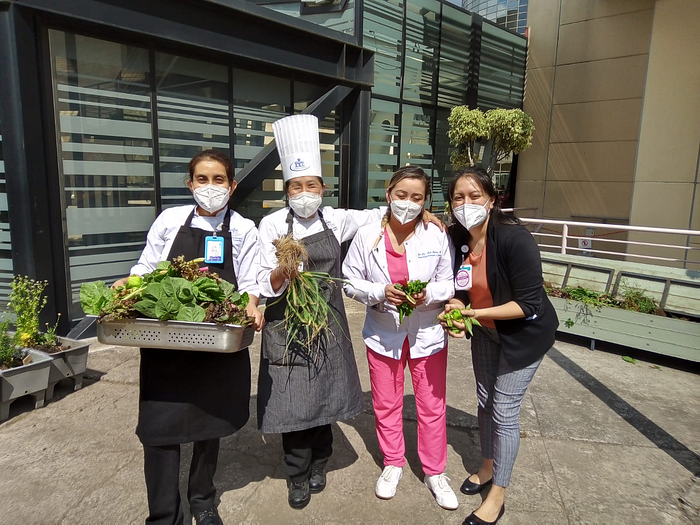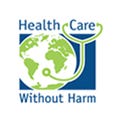How hospitals in 17 countries are tackling decarbonization & resilience, saving them $15M
38 case studies & guidance on sustainable health care
Health care organizations from around the world came together to share their step-by-step guidance for dramatically reducing greenhouse gases and protecting life-giving resources while prioritizing patient care, health equity, and resilience through Health Care Without Harm’s Health Care Climate Learning Initiative.
Together their initiatives achieved more than $15 million in savings, proving that climate-smart health care is economically viable.

Their success stories are showcased in 38 case studies, featuring videos, photos, and graphics that illustrate their challenges, victories, and lessons learned as each finds their path to achieving net-zero emissions.
Get ready to be inspired by dozens of proven strategies you can apply at your facility.
“It’s very exciting to be part of a strategy that is so ambitious and future thinking. It inspires us as health care workers to play our part in helping our district to achieve the goals we’ve set.”
— Amy Bernotas, Anaesthetic & Recovery Nurse, Hunter New England, Australia
Each health care organization took into consideration the unique needs of their communities and their capacity and resources. They identified a problem and utilized local and global resources — in some cases, those developed by Health Care Without Harm — to find solutions or improve their health care operations. They participated in a global community of practice benefiting from the insights and knowledge of a collective of health care organizations. These stories offer inspiration and replicable strategies for health care organizations everywhere.
By the numbers
“Did you know that the impact of one pound of nitrous oxide on warming the atmosphere is almost 300 times that of one pound of carbon dioxide? And we think that a large percentage of our piped-in nitrous oxide to the operating room is actually leaked into the atmosphere and never used. There’s a better way to meet this need for our patients. It’s not very often that we get an opportunity to reduce our carbon footprint and get cost savings in the process. I’m optimistic!”
— Bradley Holcomb, Manager of Respiratory Care, Pulmonary Function Lab & Pulmonary Rehab, University of Vermont Medical Center, United States


- 33 baselined and tracked their greenhouse gas emissions and reductions.
- 6 focused on reducing anesthetic gases in the operating room that produce greenhouse gases.
- 5 focused on Scope 3 emissions via procurement strategies and decisions.
- 11 focused on reducing electricity and carbon-intensive fuels.
- 16 focused on reducing waste that produces potent greenhouse gases, including waste that was formerly incinerated, waste that could be recycled or composted, and medical waste.
- 9 focused on water including retention, recycling and reuse, and rainwater harvesting.
- 1 focused on planet-friendly foods, reducing their greenhouse gas emissions via plant-forward menus.
- 1 mitigated extreme heat through native planting and landscaping improvements.
Innovative efforts & impressive results
“Brazil is already experiencing the consequences of climate change such as hunger and malnutrition caused by a decline in food production, the proliferation of infectious diseases, and increasing destruction caused by extreme weather events. At [our hospital], we are leading discussions that show the effects of climate on health and looking at our operations with commitments to neutralize carbon emissions by 2050.”
— Sidney Klajner, President, Sociedade Beneficente Israelita Brasileira Albert Einstein Hospital, Brazil



- San Rafael de Pasto Hospital in Colombia discovered it was less energy- and carbon-intensive — not to mention more affordable — to let the sun dry their laundry, so they built a one-of-kind solar laundry room.
- Royal Darwin Hospital in Australia overcame extreme heat (up to 130 F / 54 C) by planting more than 950 plants around the hospital, prioritizing native Australian species with Indigenous cultural significance.

- George Regional Hospital in South Africa invested in equipment that uses microwave technology to treat hazardous waste. Its safe disposal in a local landfill reduces emissions from incineration, reducing health risks and greenhouse gases, and saving money for transporting waste while providing local jobs.
- University of California San Diego Health in the United States reduced its greenhouse gas emissions by 25% over the past five years by serving plant-forward meals and less meat.
Read all 38 case studies on the Health Care Climate Action website.
Collaboration in action
“Thinking about processes and applying improvement processes allows us to work throughout the institution. It’s very interesting seeing how, by changing the way we do things, we can positively impact planetary health. It’s exciting to see how more and more processes consolidate in this race to zero.”
— Dr. Maria Veronica Tores Sereno, Head of Toxicology and Environment, Hospital Austral, Argentina

Representatives from 11 organizations which are members of Health Care Without Harm’s Global Green and Healthy Hospitals (GGHH) and Practice Greenhealth networks, convened in Pittsburgh, Pennsylvania, in May 2023 for the Global Gathering for Health Care Climate Action. Some of the organizations are participating in Race to Zero, the UN-backed campaign that rallies non-state actors to take action to halve global emissions by 2030 while working to center health equity and build resilience.
In the lead-up to the meeting in Pennsylvania, Health Care Without Harm and its partners organized a series of regional workshops in Latin America, Europe, Southeast Asia, and the United States. These events brought together 98 hospitals and health care organizations from 20 countries, committed to achieving net zero.

Participants from leading health sector organizations said they valued the rare opportunity to come together to share and discuss their experiences, strategies, and challenges in their efforts to achieve net zero. The case studies bring to life Health Care Without Harm’s health care sector guidance offering an action framework to achieve net zero while building adaptation capacity and centering health equity. This type of collaboration and learning is essential to accelerate collective work to transform the health care sector around the world.
To date, over 75 health care institutions representing the interests of more than 14,000 hospitals and health centers in 28 countries have joined Race to Zero through Health Care Without Harm.
Support for this project was provided by a grant from the Robert Wood Johnson Foundation’s Global Ideas for U.S. Solutions team. The views expressed here do not necessarily reflect the views of the Robert Wood Johnson Foundation.
